If you’re a Florida gardener who loves tulips, you might be wondering whether it’s possible to grow these beautiful flowers in your garden. The short answer is yes, but with some special considerations. In this post, we’re providing the ultimate guide to successfully growing tulips in a Florida climate.
Tulips need a period of cool dormancy, and Florida’s winters are just too warm to give tulips the resting period they need. However, Florida gardeners can still grow tulips if they think of them as annuals.

Understanding Tulips
If you’re planning to grow tulips in Florida, it’s important to understand the different varieties and colors of tulips available.
Tulips come in a wide range of colors, from pure white to deep purple, and they can be single-colored or have a mix of colors. Here’s some insight to help you recognize and appreciate the beauty of tulips.
Recognizing Different Varieties
There are many different species and varieties of tulip plant, but the most commonly grown types are single late variety tulips and triumph tulips.
Single late variety tulips are tall and have large flowers that bloom in late spring. They come in a range of colors, including red, orange, yellow, pink, and white.
Triumph tulips are slightly shorter and have smaller flowers that bloom in mid-spring. They come in a range of colors, including red, orange, yellow, pink, and purple.
Another variety of tulips is fringed tulips, which have fringed petals that give them a unique look. Fringed tulips come in a range of colors, including white, pink, and red.
Appreciating Tulip Colors
Tulips come in a wide range of colors, including red, orange, yellow, pink, purple, and white. Some tulips have a single color, while others have a mix of colors.
For example, the Rembrandt tulip has a white base with red stripes, while the Parrot tulip has a mix of colors that give it a unique look.
When choosing tulip colors for your garden, it’s important to consider the overall look you want to achieve. If you want a bright and bold garden, choose tulips in vibrant colors like red, orange, and yellow. If you prefer a more subtle look, choose tulips in soft pastel colors like pink, purple, and white.
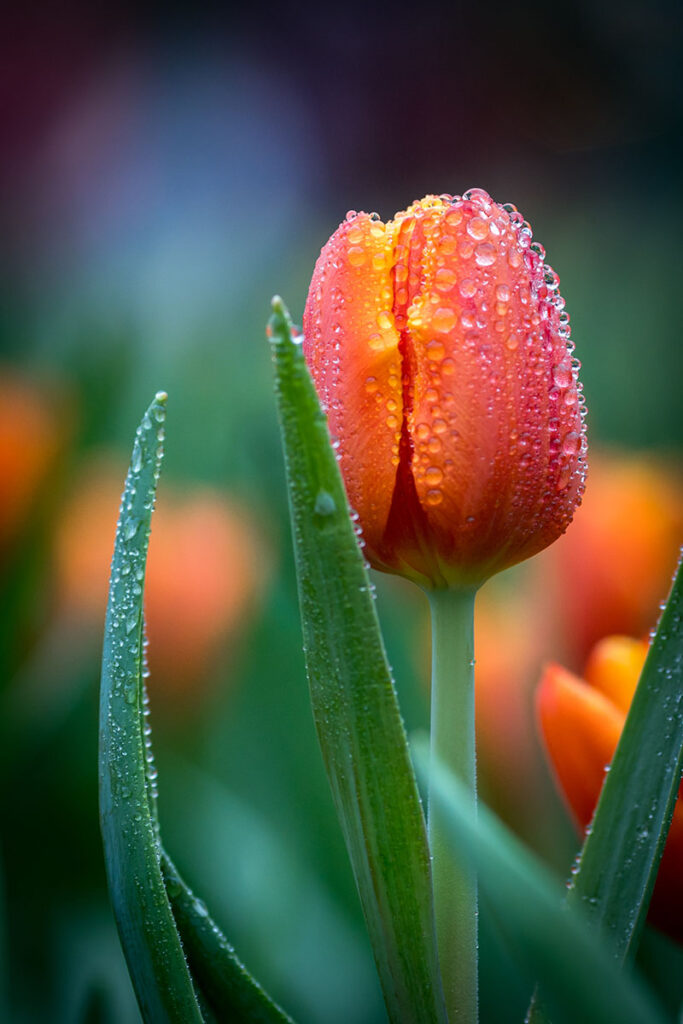
Florida’s Climate and Tulips
If you live in Florida and want to grow tulips, you should be aware of the state’s warm climate.
Tulips are a popular flower that require a period of cool dormancy, which can be difficult to achieve in Florida’s warmer climate.
However, with the right techniques and understanding of Florida’s climate, you can successfully grow tulips in your garden, despite the warm weather.
Climate Hardiness Zones
Florida is a large state with varying climates, so it’s important to know which climate hardiness zone you live in.
The USDA Climate Hardiness Zone Map divides the United States into 13 zones based on minimum winter temperatures. Florida falls into zones 8, 9, 10, and 11.
If you live in northern Florida, you may be in zone 8 or 9, which means you have colder winters and can grow tulips more easily.
But if you live in south Florida, you may be in zone 10 or 11, which means you have warmer winters and may need to take extra steps to grow tulips successfully.
Heat and Drought Tolerance
Tulips are not very heat or drought tolerant, so it’s important to choose the right location for your tulip bulbs.
Tulips need well-draining soil and plenty of moisture, especially during their growing season. If you live in south Florida, you may need to water your tulips more frequently or provide some shade to protect them from the intense sun.
To help your tulips survive the heat and drought, you can also add organic matter to your soil, such as compost or manure, to improve its water-holding capacity.
Additionally, you can mulch your tulip bulbs with a layer of organic material to help retain moisture in the soil.
Overall, growing tulips in Florida can be a challenge due to the state’s warm climate. Nevertheless, by choosing the right location, providing plenty of moisture and shade, and adding organic matter to your soil, you can successfully grow tulips in your garden.

Planting Tulips in Florida
If you want to grow tulips in Florida, you need to keep in mind that the state’s warm climate isn’t ideal for these plants.
With the right planting process and location, you can still grow beautiful tulips in your garden. This section will guide you through the process of planting tulips for the best results.
Choosing the Right Location
Choosing the right location is crucial for growing tulips in Florida. You need to select a sunny location that receives partial shade during the day.
Tulips grow best in well-draining soil, so make sure the planting area is well-drained. If you have heavy soil, you can add compost or sand to improve drainage.
Planting Process
When planting tulips in Florida, the best time to plant the bulbs is in the fall, about six to eight weeks before the first frost. This will give the bulbs enough time to establish themselves before the cold weather arrives. Here’s how to plant tulip bulbs:
- Dig holes that are about 6 inches deep and 4 to 6 inches apart.
- Place the tulip bulbs in the holes with the pointed end facing up.
- Cover the bulbs with soil and water them thoroughly.
Using Containers and Pots
If you don’t have enough space in your garden beds, or you don’t have a backyard, you can also grow tulips in pots and containers on balconies or patios. Here’s how to plant tulip bulbs in pots:
- Choose a pot that is at least 6 inches deep and has drainage holes.
- Fill the pot with well-draining soil.
- Place the tulip bulbs in the soil with the pointed end facing up.
- Cover the bulbs with soil and water them thoroughly.
Care for Tulips in Florida
Growing tulips in Florida can be a challenge, but with proper care, you can enjoy these beautiful flowers in your garden and even indoors.
Soil and Fertilizer
Tulips require well-draining soil that is rich in organic matter. You can add compost, peat moss, or other organic material to improve the soil quality.
Before you plant tulips, make sure to mix the organic material into the soil to a depth of at least 12 inches to help with drainage and provide nutrients for the tulip bulbs.
Fertilizer is also important for the proper growth of tulips. You can use a slow-release fertilizer that is high in phosphorus, which will help promote root growth and flower production.
Apply the fertilizer according to the package instructions, and be careful not to over-fertilize, as this can damage the bulbs.
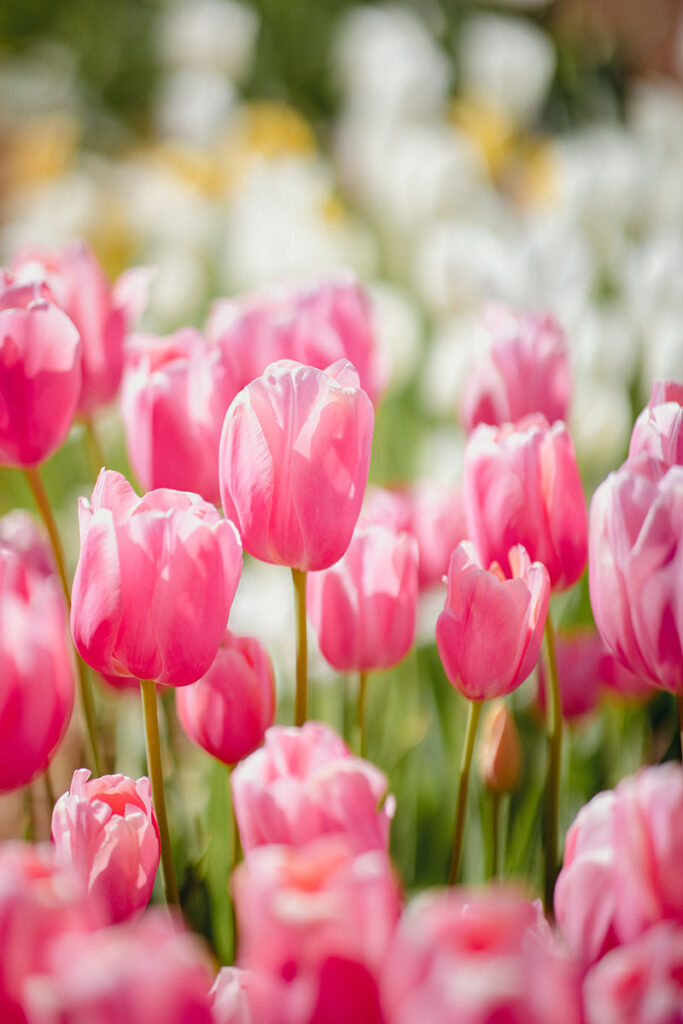
Water and Drainage
Tulips require regular watering, especially during their growing season. Make sure to keep the soil moist but not waterlogged, as this can cause the bulbs to rot.
If you have heavy soil that does not drain well, you can add sand or perlite to improve drainage. Mulching around the tulip bulbs can also help retain moisture in the soil and prevent weeds from growing.
Use a layer of mulch that is 2-3 inches thick, and make sure to keep it away from the base of the tulip stems.

Winter Care and Dormancy
Tulips require a period of cold dormancy in order to bloom properly. In Florida, the winters are generally too warm to provide this necessary period of cold. However, you can still grow tulips in Florida by treating them as annuals.
After the tulips have finished blooming, allow the foliage to die back naturally. Once the foliage has turned yellow and withered, you can remove it from the soil.
Store the tulip bulbs in a cool, dry place for the summer, and refrigerate them for 6-8 weeks before planting them again in the fall.
One thing to keep in mind is that ethylene gas can cause tulip bulbs to rot. Avoid storing tulip bulbs near fruits or vegetables that produce ethylene gas, such as apples, bananas, or tomatoes.
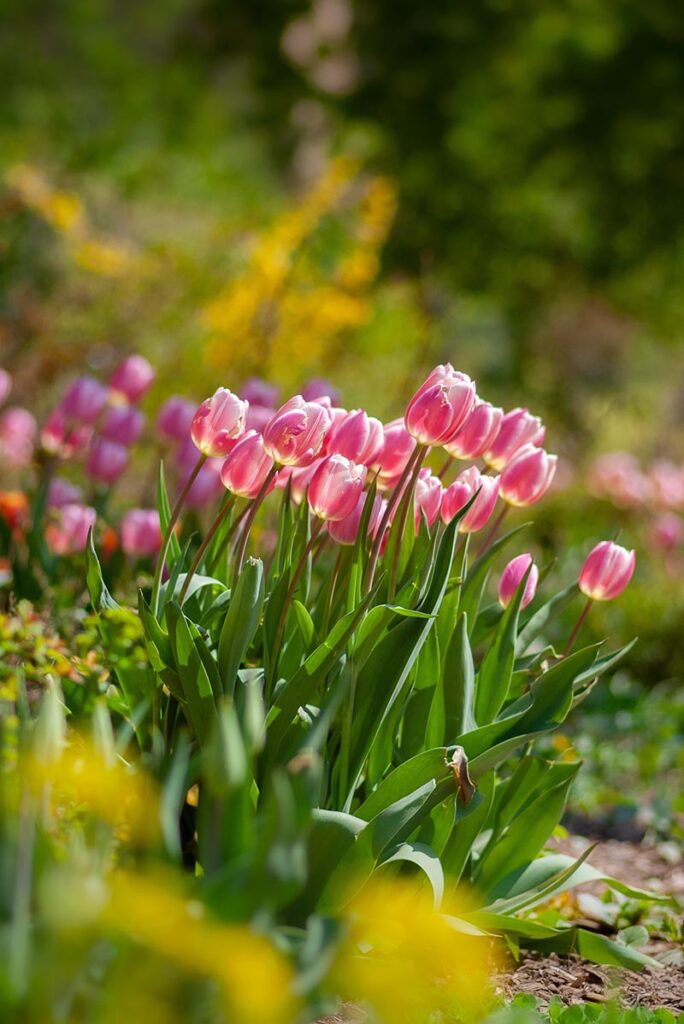
Tulips Blooming Season in Florida
Tulips are a beautiful addition to any garden, and they can be grown successfully in Florida with a little extra care.
Understanding the blooming season of tulips is important for achieving a successful and beautiful garden.
Spring Blooming
Tulips are known for their vibrant colors and are often associated with springtime. In Florida, tulips bloom in the late winter and early spring, typically from February to April.
The exact bloom time can vary depending on the location, weather conditions, and the type of tulip planted.
It is important to note that tulips are not a year-round blooming flower in Florida. They require a period of cold dormancy to bloom, which is why they are typically planted in the fall, so they can experience the cold temperatures needed to stimulate growth.
If you want to enjoy tulips in the spring, you need to plan ahead and plant them in the fall to ensure they bloom at the right time.
Once planted, it is important to keep the soil consistently moist to encourage root growth and development.

Annual vs Perennial Tulips
Tulips can be either annual or perennial, and it is important to understand the difference between the two when planning your garden.
Annual tulips will only bloom once, and then they will die off. Perennial tulips, on the other hand, will continue to bloom year after year.
Annual tulips are great for adding a pop of color to your garden for a single season. They are typically planted in the fall and bloom in the spring.
After they bloom, they will die off, and you will need to plant new bulbs in the fall if you want to enjoy tulips again the following year.
Perennial tulips, on the other hand, will continue to bloom year after year without needing to be replanted.
They require a little extra care, but they are a great investment for a long-term garden. Perennial tulips should be planted in the fall, just like annuals, but they will continue to bloom year after year.

Troubleshooting Common Problems
Despite proper planning and care, there are a few common problems that you may encounter when trying to grow tulips in Florida.
Dealing with Root Rot
One of the most common problems you may encounter when growing tulips in Florida is root rot.
This is a fungal disease that can be caused by overwatering or poorly-draining soil. Symptoms of root rot include yellowing leaves, stunted growth, and a foul odor coming from the soil.
If you suspect your tulips are suffering from root rot, the first step is to stop watering them immediately.
Allow the soil to dry out completely before watering again. You may also want to consider repotting your tulips in fresh, well-draining soil.
To prevent root rot in the future, make sure you are not overwatering your tulips and that they are planted in soil that drains well.
You can also add a layer of mulch to the soil to help retain moisture without causing waterlogged conditions.
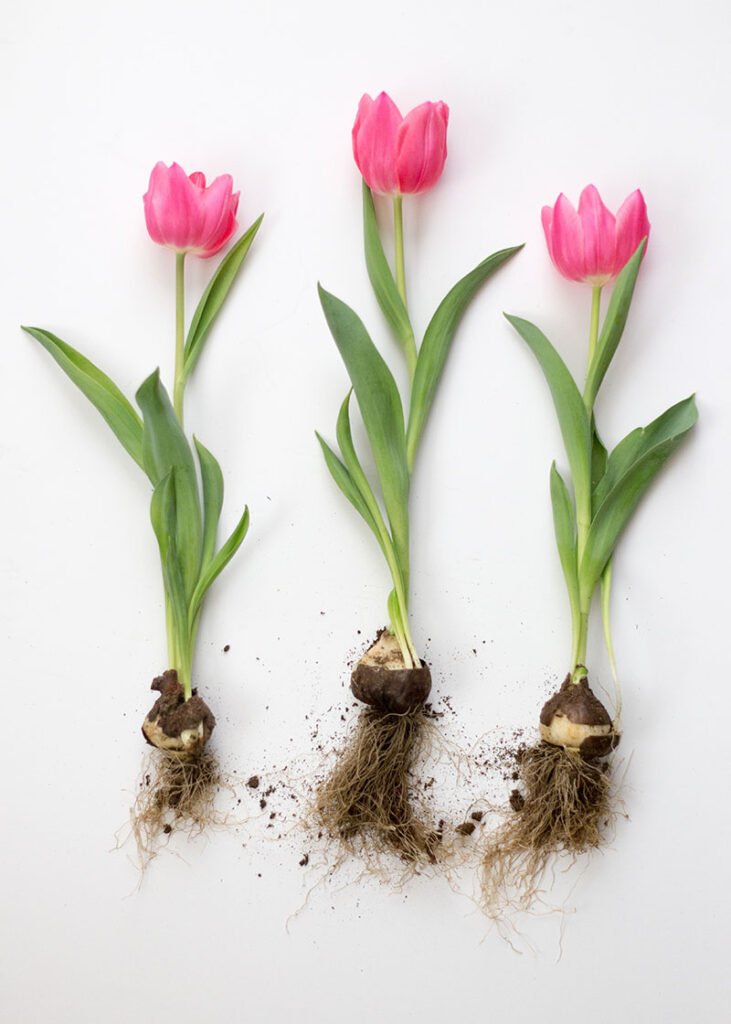
Understanding Bulbous Plants
Tulips are bulbous plants, which means they store their energy in underground storage organs called bulbs.
These bulbs are essential for the growth and development of the plant, and it is important to understand how to care for them properly.
One common mistake people make when growing tulips is planting the bulbs too shallow or too deep. If the bulbs are planted too shallow, they may not have enough protection from the elements. On the other hand, if they are planted too deep, they may not receive enough oxygen to grow properly.
To ensure your tulip bulbs are planted at the correct depth, use a planting depth guide or measure the distance from the base of the bulb to the soil surface.
It is also important to plant the bulbs in well-draining soil to prevent them from rotting or becoming waterlogged.
In addition to proper planting depth and soil conditions, it is important to provide your tulips with adequate nutrients.
You can do this by adding compost, peat moss, or manure to the soil before planting. You may also want to consider fertilizing your tulips with a balanced fertilizer during the growing season.
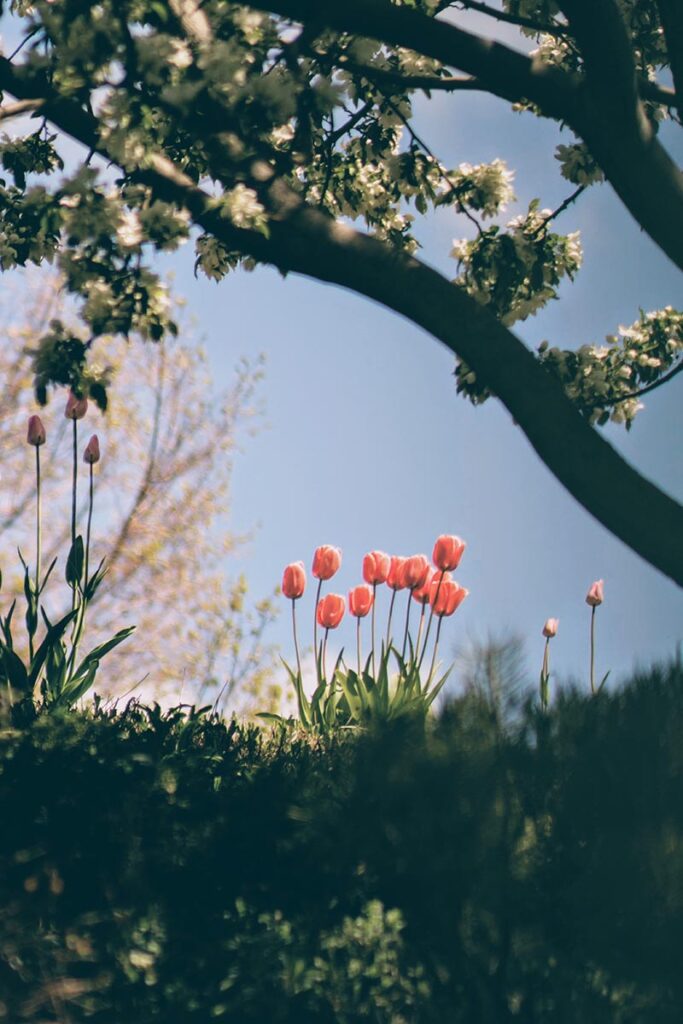
Enjoying Tulips in Your Garden
There’s something special about seeing tulips growing in your garden and with a little care, you can enjoy their colorful display year after year. Here are some tips for creating a vibrant tulip garden and maintaining healthy blooms and foliage.
Creating a Colorful Display
When planning your tulip garden, consider the color scheme you want to achieve. Tulips come in a wide variety of colors, from neutral whites and creams to vibrant pinks, reds, and yellows. You can also choose from different sizes and shapes, including single and double blooms, fringed petals, and more.
To create a formal garden, plant tulips in rows or geometric patterns. For a more natural look, scatter bulbs throughout your garden beds. You can also plant tulips in containers for a colorful display on your patio or balcony.
When choosing a location for your tulip garden, look for a spot with full sun and well-drained soil. Tulips prefer a slightly acidic soil pH of around 6.0 to 6.5. If your soil is too alkaline, you can add sulfur or peat moss to lower the pH.

Maintaining Healthy Foliage
To ensure the success of your tulip garden, it’s important to maintain healthy foliage. Tulips grow from bulbs, which store energy for the plant to bloom.
After the flowers fade, the plant needs to replenish its energy for the following year’s growth. To maintain healthy foliage, water your tulips regularly and fertilize the soil with a balanced fertilizer.
When the flowers have gone over, cut back the stem but leave the leaves intact. The leaves will continue to photosynthesize and provide energy to the bulb. Once the leaves turn yellow and wither, you can remove them.
Tulips grow to a height of around 6 to 24 inches, depending on the variety. The leaves are long and narrow, and the stem is sturdy enough to support the weight of the flower.
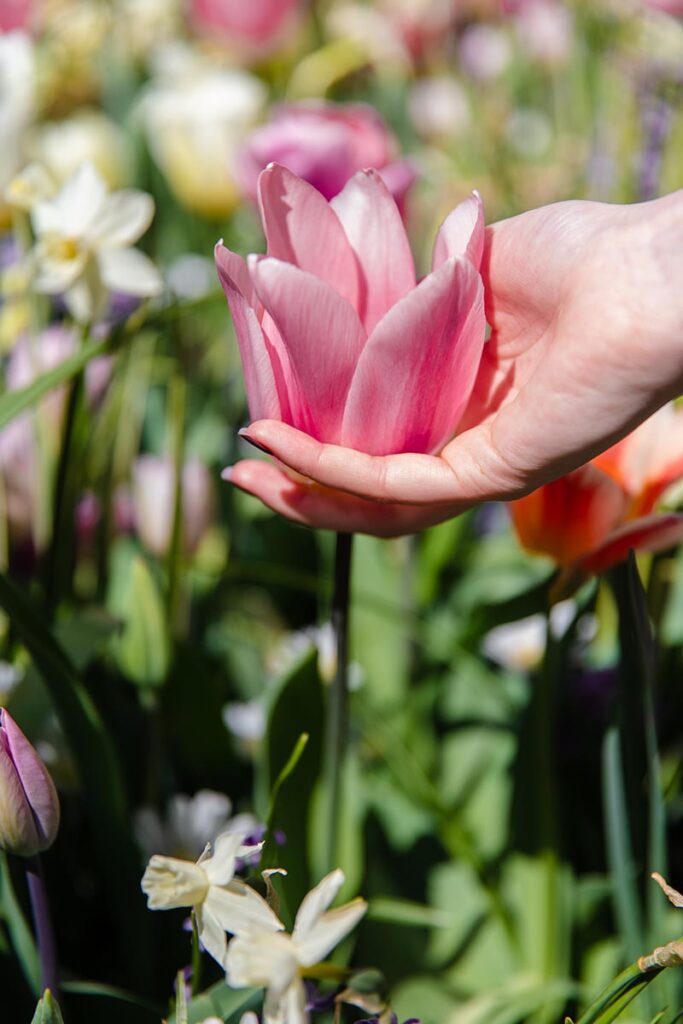
Grow More in Florida
Due to Florida’s warm climate, it’s quite challenging to grow certain plants and flowers. However, there are still many options for those looking to add some greenery or color to their gardens.
If you’re looking to add more plants and flowers to your Florida garden, here are a few other options that thrive in the state’s warm climate:





